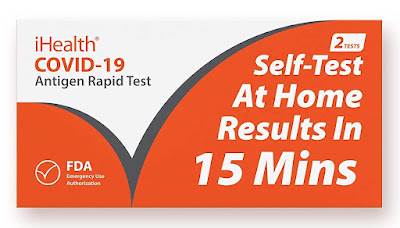PCR COVID Test vs Rapid Test: What's the Difference?
More than 650 million COVID-19 tests have been done in the United States since early 2020, and nearly 50 million of those tests identified the COVID-19 virus responsible for a global pandemic (R).
Testing rates decreased for a time once vaccines became available and the numbers of new cases started to decline. However, new variants and a desire to return to a semblance of normal life have increased the demand for tests again.
There are more options for testing now than there were at the start of the pandemic. Lab testing is still available, but new types of at-home tests have made testing easier. Not every test is created equal, though, and there are pros and cons to each type of COVID-19 test (R).
This article will review the different COVID-19 tests and the benefits and drawbacks of each.
Types of COVID-19 tests
Two types of COVID-19 tests are popular: the polymerase chain reaction (PCR) test and the antigen test, a.k.a. the rapid test. Both tests require a sample from the patient, usually a nasal swab.PCR test
How it worksThe PCR test takes a sample of ribonucleic acid (RNA) and “amplifies” it with the help of lab technologies. Amplifying RNA helps to make even small traces of the COVID-19 virus visible in the test sample. Even if you have a small trace of the virus in your system, the PCR test will detect it.
The PCR test doesn’t alter your genetic material – DNA – in any way, and your test provider isn’t able to do anything with your DNA besides tell if you’re positive with COVID-19.
Benefits
“PCR tests are more reliable and accurate due to testing the specific genetic material of the virus, eliminating the interference from other viruses,” said Heather Seyko, a Laboratory Services manager for OSF HealthCare.
Drawbacks
While a PCR test is the preferred method of detecting COVID-19, it’s not always the easiest test to get. PCR tests must be done by a health care provider, and they don’t produce immediate results, which means you may be waiting a few days to know if you’re positive or negative.
Antigen test
How it worksThe rapid test, called an antigen test, checks for proteins that are found on the outside of the virus.
The antigen test mimics what antibodies do. Antibodies are the “good guys” that attach to the antigen protein (the “bad guys”) and fight the virus. When you give your nasal swab sample, it’s put into a liquid and then onto a test strip.
The test strip acts like an antibody – if there are any COVID-19 antigen “bad guys” in your system, the molecules in the liquid will attach to those antigens, and a line will appear on the test strip. This means you’re positive for COVID-19. If there are no antigens detected in your system, the liquid doesn’t respond and no line will appear, often meaning you are negative for the virus.
Benefits
- Results in about 15 minutes
- Easy enough to do on your own (There’s always a little room for user error, but as long as you closely follow the directions, anyone can test themselves with an antigen test.)
- Helps slow the spread of contagious viruses like COVID-19 with quicker results
“Unlike the PCR test, the antigen test can only determine if you have an active virus in your body. The rapid test can’t detect small amounts of the virus or asymptomatic cases as accurately as the PCR test can,” Heather said.
The rapid test is less accurate and there is a greater chance for a false negative. Plus, the test will only pick up if the virus is active in your body, meaning asymptomatic cases – when someone doesn’t have any symptoms – are harder to identify with the antigen test.
Choosing which test to get
If you’re visiting a health care provider to get tested, it’s likely you won’t get to choose which test you get. This is for a few reasons. First, it could just be a matter of what test is readily available or in greater supply. Second, tests are chosen based on probability of having the virus.
“PCR would be chosen where there is a low likelihood of having the virus, but we want to be certain the patient doesn’t have it. Antigen would be chosen if there is a high probability the patient has the virus (i.e. is experiencing symptoms), and we need to screen the patient as positive or negative,” Heather said.
Getting tested is an important part of slowing the spread of COVID-19. With more accurate results, PCR tests are the preferred way to go, but antigen tests work for rapid results, as well.






.png)


Comments
Post a Comment